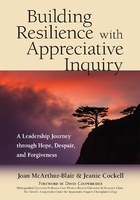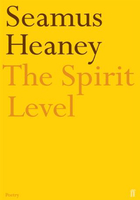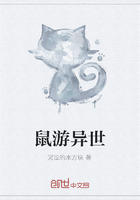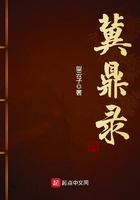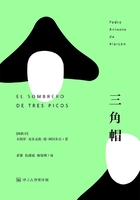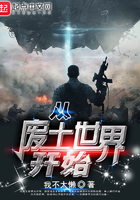Japanese crewmen ready Zero fighters for takeoff before the raid on Pearl Harbor. Nine hours later, Zero fighters attacked Clark Field in the Philippines. December 1941.
DECEMBER 8, 1941 + DAY ONE
Luzon, Philippine Islands
Hours before daylight, Navy nurses at Ca?acao Naval Hospital woke to pounding on their doors.
"Wake up! No, don't turn your light on! It's a blackout," called the nurse who ran from room to room, telling the women to get dressed and get downstairs.
"A drill at this hour?"
"Hell, no! The Japanese are bombing Pearl Harbor!"
The Philippines lie on the other side of the international date line from Hawaii, so while the attack on Pearl Harbor occurred at 7:55 Sunday morning, December 7, in Manila it was early morning Monday, December 8.
The first person in the Philippines to hear of the Japanese attack was a U.S. Navy radioman who caught something on the airwaves at about 2:30 A.M. He called a friend at the Ca?acao nurses' quarters after notifying his commanding officer.
Navy nurses gathered downstairs to receive their orders: discharge to active duty any naval officer or sailor who could walk. The women rushed out into the dawn. Dodging mud puddles left from recent rains, they ran more than a block to the hospital.
ONE HUNDRED AND FIFTY MILES NORTH, HIGH in the mountains near the village of Baguio, Army Nurse Ruby Bradley was on duty that morning at the Camp John Hay hospital, sterilizing instruments for a routine surgery. The surgeon summoned Ruby and told her not to bother gloving and gowning for the operation-the Japanese had attacked Pearl Harbor.
Just then, an explosion sounded outside, so loud, Ruby's ears rang. Running to the window, she saw bombs falling, the Japanese planes coming in so low, she saw the pilots' faces!
The Japanese dropped fifty bombs. None hit the hospital, but casualties quickly rolled in.
"There were thirty-seven that came in right away. There were about as many killed as alive," Ruby said. "We were lucky, though, because if this had happened just five minutes later, when the troops are out on the field in the morning, we would have had many more casualties."
AT ABOUT THIS TIME, ETHEL THOR AND OTHER nurses at Sternberg Hospital in Manila heard about the attack on Pearl Harbor. The news traveled fast. Details sketchy. Impossible to believe. Tears flowed as word came of heavy American casualties. Many nurses had friends stationed in Hawaii.
"Girls! Girls!" Chief Nurse Josephine "Josie" Nesbit shouted to nurses going off night shift. "You've got to sleep today. You can't weep and wail over this, because you have to work tonight."
Nurses did not yet know of the attack on Camp John Hay, but if war had truly started, they suspected that the Japanese would target the Philippines next. Nurses winced when handed twenty-year-old gas masks and helmets, equipment from the Great War. But they tried them on and studied pamphlets telling how to detect poisonous gases and care for gassed patients.
Then supervisors told nurses to go about their regular routine. The danger seemed so unreal at Fort McKinley that Army nurses Hattie Brantley and Minnie Breese took the masks and kept their tee time at the golf course.
U.S. Army nurses in the Philippines were issued gas masks in May 1941. Here, nurses test them two weeks before the Japanese attack.
A Vought O2U floatplane flies over Cavite Naval Shipyard, c. 1936. Ca?acao Naval Hospital, part of Sangley Point Naval Station, is in the background, in front of the left two radio towers.
BACK AT CA?ACAO NAVAL HOSPITAL, CONFUSION reigned as Peggy Nash and the entire staff rallied. By 10:30 A.M. all able-bodied patients had their discharge orders so they could report to their stations. Rumors circulated that the Japanese had bombed the coast of California. Nurses worried that nearby Cavite Naval Shipyard would be targeted.
At noon Peggy and the others sat down for lunch. Before they'd taken a bite, the air-raid siren wailed. Nurses gaped at one another, wondering where to run, where to hide, finally fleeing to the crawl space under the building to sit in the dirt.
Soon the all-clear sounded. No bombs had fallen, the only casualty their once-white uniforms. Headquarters sent boxes of sailors' jeans and work shirts, but the low-slung bell-bottoms were not designed to fit women. As nurses tried them on, the room filled with gales of laughter.
"I'll die before I wear these," Peggy said.
While they were laughing, bombs dropped on Clark Field at Fort Stotsenberg.
Fort Stotsenberg Station Hospital
AS AT CA?ACAO, RITA PALMER AND THE OTHER nurses at Stotsenberg had been ordered to discharge all able-bodied men from the hospital. Everyone talked about Pearl Harbor, but nobody at Stotsenberg or Clark Field knew the severity of the attack-the Pacific Fleet had been destroyed, snuffing out any chance of its aiding the Philippines.
U.S. B-17 bombers and P-40 fighters on the Clark Field runway under Japanese attack. North of Manila, December 8, 1941.
Nine hours after the bombing of Pearl Harbor, Rita was eating lunch when the shriek of air-raid sirens ripped the air. Seconds later, bombs whistled down and hit with deafening explosions. She sprinted to the hospital, the ground rolling with shock waves.
Bombs dropped in droves from planes painted with the red rising sun of the Japanese Empire. The bull's-eye of their target was Clark Field, two blocks away.
Pilots raced for their planes. Soldiers ran to their antiaircraft guns. No air-raid shelters had been built, no trenches dug. Some men dove into drainage ditches, shooting their rifles at the Japanese bombers-bombers flying thousands of feet beyond the reach of American antiaircraft artillery.
The eastern sky turned black with smoke. From the hospital windows, Rita watched as fire blazed from barracks and hangars. American B-17 bombers and P-40 fighters lined up on the tarmac burst into fireballs, igniting grass and trees surrounding the airfield. Three P-40 fighters rose from the inferno, only to be shot from the sky.
Nurses barely comprehended the bombings before waves of Japanese Zero fighters zipped in. Planes darted in and out of the columns of smoke, their machine guns strafing Clark Field-virtually unopposed.
Stotsenberg's few ambulances brought in the first wounded men, jolting Rita and the other nurses into action. The bombardment had spared them, but its aftermath soon filled the hospital with hundreds of wounded and dying men. Rita had no preparation for such slaughter. In fact, the Army nurses had never had any training for combat nursing.
Wards overflowed. The wounded lay on the porches, some on litters, some on the ground. Nurses gave shot after shot of morphine-to deaden the men's pain and quiet their screaming. They sorted the patients into three groups: those whom doctors would need to treat first, those whose wounds did not look fatal, and those they could only make comfortable until they died. The nurses had read about working triage in textbooks but had never expected to make these grave choices themselves.
Rita had no time for feelings. She hadn't even time to keep charts. Nurses put signs on the foreheads of some of the badly wounded, listing the drugs and dosage they'd been given. A patient called one nurse's name, but his face was so badly burned, she couldn't recognize him. The women labored nonstop-stanching blood, bandaging wounds, easing agony if possible. One soldier's blood soaked through his mattress. Another victim embodied Rita's horror: a sixteen-year-old boy who had lied about his age to get into the Army lost both his legs.
Many of the men had taken cover facedown on the ground. Bomb concussions and strafing bullets had driven dirt and debris into their faces. Nurses did what they could to clean and soothe damaged skin and blinded eyes with bath towels soaked in cool water. The worst of these cases had also had their backsides blown away, muscles and tissue ripped off, leaving huge wounds that would require months to heal.
By midafternoon the number of wounded overwhelmed the Stotsenberg doctors and nurses. The medical staff called Sternberg Hospital in Manila, pleading for help. Afternoon turned to evening without a break for Rita or the others. Finally, close to midnight, help came: five Army nurses, four doctors, and fifteen Filipino nurses.
Swamped with such suffering, the nurses grasped at anything to stay sane and keep going. Surgical teams released tension with black humor. The absurdity of one Army nurse having brought her golf clubs from Manila in hopes of having time to visit the country club lent comic relief as they operated through the night and next day.
In the days that followed, nurses dressed wounds, gave shots for pain relief, and tried to make dying men comfortable. It became routine, though it was anything but. The beauty and peace of Fort Stotsenberg and Clark Field had vanished. The Japanese attack had killed 85 men, wounded 350, and demolished nearly half the strength of America's Far East Air Force. For the first time, nurses at Stotsenberg were issued dog tags-a means of identification in case of death.
Army Nurse Floramund Fellmeth used a hammer and letter and number punches to pound her name and serial number into these metal discs. These served as her identification throughout the war.


